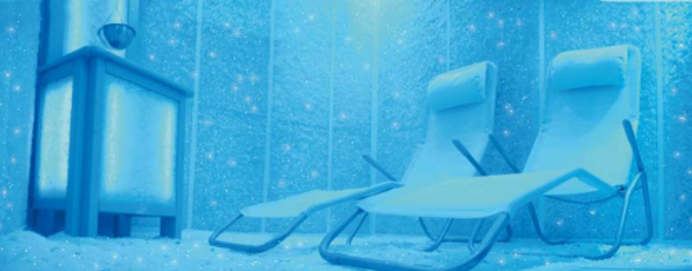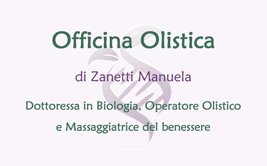
La grotta è un ambiente le cui pareti sono rivestite di sale, dove si respira aria ricca di particelle saline che vengono assorbite dall’organismo permettendo di ottenere benefici per la salute, in particolare per il sistema respiratorio e per la pelle. All’interno della grotta le particelle di sale creano un microclima simile a quello che possiamo ritrovare sulle spiagge, nelle grotte salmastre e nelle miniere di sale. I più piccini possono divertirsi avendo a disposizione tanti giochi.

Nella grotta del sale si entra vestiti leggeri, senza scarpe e indossando un paio di calze bianche pulite o le apposite ciabattine fornite dal personale del centro. All'interno della grotta si trovano delle poltrone chaise longue sulle quali stendersi e rilassarsi. All'interno della grotta è possibile leggere, sfogliare delle riveste e giocare con i propri bambini. La permanenza in grotta è di circa 40 minuti.
Il trattamento è da considerarsi un trattamento benessere a tutti gli effetti e non è sostitutivo della prescrizione medica o delle cure seguite nello stesso periodo.
Controindicazioni: Nessuna. Salina Suite è adatta a tutti, grandi e piccini. La totale assenza di Iodio la rende adatta anche alle persone che soffrono di malattie della tiroide. In caso di ipertensione chiedete consiglio al nostro personale.

STUDI SCIENTIFICI:
Chernenkov RA, Chernenkova EA, Zhukov GV.
The use of an artificial microclimate chamber in the treatment of patients with chronic obstructive lung diseases.
Vopr Kurortol Fizioter Lech Fiz Kult. 1997; (4):19-21.
Abstract
Halotherapy was used for sanatorium rehabilitation in 29 patients with chronic obstructive pulmonary diseases (chronic bronchitis and asthma). Significant positive effects of this method resulted in the improvement of the flow-volume parameters curve of lung function and in hypotensive effects on blood pressure. Halotherapy is recommended for use in patients suffering from chronic obstructive pulmonary diseases with hypertension or coronary heart disease.
Grigor'eva NV.
Halotherapy in combined non-puncture therapy of patients with acute purulent maxillary sinusitis.
Vestn Otorinolaringol.2003; (4):42-4.
Abstract
Halotherapy was applied for non-puncture treatment of 45 patients with acute purulent maxillary sinusitis. The response was evaluated by changes in clinico-immunological, cytological, x-ray and bacteriological parameters. Halotherapy was found effective in the treatment of acute purulent maxillary sinusitis without puncture.
Matteo Gelardi, Lucia Iannuzzi, Antonio Greco Miani, Simone Cazzaniga, Luigi Naldi, Concetta De Luca, Nicola Quaranta.
Double-blind placebo-controlled randomized clinical trial on the efficacy of Aerosal® in the treatment of sub-obstructive adenotonsillar hypertrophy and related diseases
International Journal of Pediatric Otorhinolaryngology. 2013; 77:1818–1824.
Abstract
Background: Adenotonsillar hypertrophy (ATH) is a frequent cause of upper airways obstructive syndromes associated to middle ear and paranasal sinuses disorders, swallowing and voice disorders, sleep quality disorders, and occasionally facial dysmorphisms. ATH treatment is essentially based on a number of medical–surgical aids including nasal irrigation with topical antibiotics and corticosteroids and/or treatment with systemic corticosteroids, immunoregulators, thermal treatments, adenotonsillectomy, etc.
Objectives: The aim of the present study is to assess the efficacy of Aerosal1halotherapy in the treatment of sub-obstructive adenotonsillar disease and correlated conditions compared to placebo treatment.
Methods: A total of 45 patients with sub-obstructive adenotonsillar hypertrophy were randomized to receive either Aerosal1 halotherapy or placebo for 10 treatment sessions. The main outcome was a reduction greater than or equal to 25% from the baseline of the degree of adenoid and/or tonsillar hypertrophy.
Results: In the intention-to-treat analysis, a reduction of the degree of adenoid and/or tonsillar hypertrophy 25% from baseline after 10 therapy sessions was found in 44.4% of the patients in the halotherapy arm and in 22.2% of the patients in the placebo arm (P = 0.204). Among the secondary outcomes, the reduction of hearing loss after 10 treatment sessions in the halotherapy arm was higher than the placebo arm (P = 0.018) as well as the time-dependent analysis showed significantly improved peak pressure in the Aerosal® group (P = 0.038). No side effects were reported during the trial. In addition, the therapy was well accepted by the young patients who considered it as a time for play rather than a therapy.
Conclusions: Aerosal halotherapy can be considered a viable adjunct, albeit not a replacement, to conventional medical treatment of sub-obstructive adenotonsillar syndrome and related conditions. Further research is however needed to improve ATH treatment.
